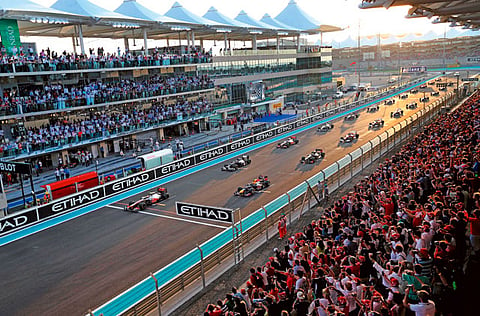A tale of four cities
As the competitive landscape in the meetings industry shifts like the Arabian sands, We take a look at the opportunities ahead for the region’s main players

When we first started producing dedicated publications for the meetings industry in the Middle East during the 1990s, I remember the source markets being very different. In those days, 80-90 per cent of our distribution went into Europe — particularly the UK, Germany and France. Today, the situation is reversed and the majority of our audience is based within the Middle East, with around 20 per cent going internationally.
Dubai as benchmark
The change reflects the market and the rapid growth of regional headquarters for large international companies relocating to the Gulf. We have industry-focused ‘cities’ of almost every type in Dubai, dedicated to everything, from media and IT to medical and financial, and we are seeing a variation of the same theme in Abu Dhabi, Muscat and Doha.
Come 2013, and the leading source market in Dubai and Abu Dhabi is the UAE itself, followed by other Gulf countries, and then European business.
The situation is not new and has been developing and evolving since the millennium. What is new is the dynamics of competition within the Gulf. Until the downturn of 2008, Dubai was the star player, so far ahead of any potential challenger that there was no competition.
Rising Abu Dhabi
Abu Dhabi was the UAE’s sleeping giant and it awoke with a start at the turn of the financial crisis, building infrastructure at warp speed while development in other destinations slowed down or even came to a standstill. World firsts started to catch up with Dubai and there are now hotel properties in Abu Dhabi that could be judged among the best anywhere, while Abu Dhabi National Exhibition Centre has both state-of-the-art meeting facilities and a burgeoning Capital Centre with a slew of hotels, accompanying meeting facilities and F&B offerings.
However, there are two major differences at the moment between these cities. The first is occupancy and the second is rates. Whereas in 2008, both destinations ran side by side on both counts, ranking first and second internationally, today Dubai demands as much as 50 per cent more for a beach stay with day delegate rates commanding a similar premium.
Dubai is established and Abu Dhabi is the rising contender, which makes the field of play an interesting one from the buyer’s perspective. The capital’s current USP is luxury at budget prices on an international as well as a local scale. However, a second USP and one not currently marketed is the fact that it is just an hour or so from Dubai.
Right now, Abu Dhabi has a hunger to fill its room stock and meeting space, while Dubai maintains occupancies upwards of 80 per cent for much of the year. The immediate opportunity is to take business from the leading player, highlighting the fact that all of Dubai’s attractions are within a reasonable commute, plus the unique offerings of the capital besides — from the Shaikh Zayed Grand Mosque to the pleasure island that is Yas.
Of course, the medium-term strategy will be different and Abu Dhabi will soon have a wide portfolio of world-class attractions all of its own. The Guggenheim and the Louvre are appearing closer on the horizon and Dubai’s status as the go-to place for shopping will be challenged by the likes of Avenue at Etihad Towers, the Galleria at Sowwah Square and other new malls that promise to eclipse Dubai in terms of retail space. However, in the meantime, hotel infrastructure has zoomed far ahead of the attractions pipeline, and it will take a little while to catch up.
Other contenders
Dubai and Abu Dhabi are certainly at the top of the regional league table for the meetings industry, but they are certainly not alone. While Bahrain has been on the benches due to political strain, Qatar flexed its financial muscle to build what is widely regarded as the world’s finest convention centre, and is undertaking a marathon task of building up to the World Cup 2022.
Oman is also shaking off its more nonchalant reputation and is constructing an incredible new meetings facility (Oman Convention & Exhibition Centre) that showcases the destination as a whole amidst natural beauty and resplendent mountains. Fast-forward to 2016 and there may be some surprises as Oman has the X factor that can’t be usurped by anything man-made.
With the Gulf Incentive, Business Travel and Meetings (GIBTM) exhibition beginning today, these are exciting times for the meetings industry. At no other time in the Gulf have we had so much competition or potential for success.
The political strife elsewhere in the Middle East is driving business into the UAE, Oman and Qatar, creating a perfect storm for tourism and investment. Each destination has its own unique cards to play, but like everything in business and industry, it is not just the cards you hold, it is how you play them.
Sign up for the Daily Briefing
Get the latest news and updates straight to your inbox



